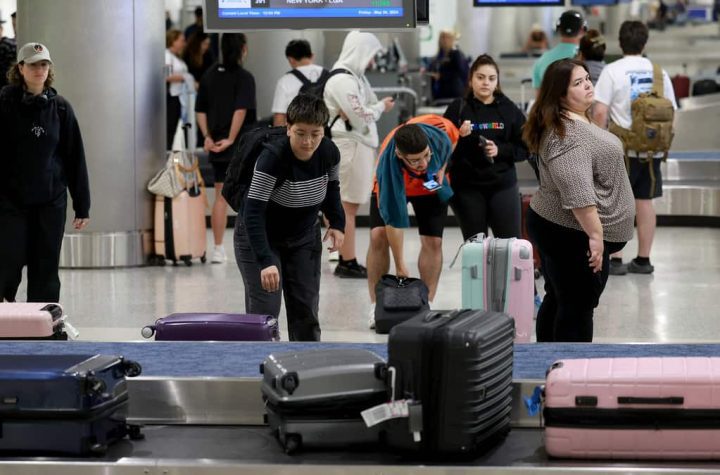
But current absorption is unprecedented. “This is massive,” said Alexander Hijzen, a labor economist at the Organization for Economic Cooperation and Development.
In Germany, as many as one in four employees may follow a short-term work program, according to Hijzen. In France and Italy, the number has risen to one in three or more workers.
‘Better than unemployment’
In Europe – where it is more difficult to hire and fire workers, employees have a lot of protection and many are protected by collective bargaining agreements – short-term work programs have long been popular, and they are well-known among employers and employees.
Kurzarbeit, the region’s most well-known short-term work program, has its roots since a century ago, and has been tapped often to protect jobs in Germany since the oil crisis in the 1970s.
This seems to be true during the recession that followed the 2008 financial crisis. German employment fell by only 1% even though economic output fell 7%, according to Berenberg Bank economist Florian Hense. In the United States, where gross domestic product shrank by 4%, employment fell more significantly by 5.4%.
Some economists argue that other factors, such as the way companies tabulate overtime pay and the slow pace of recruitment leading to recession, may also play a role in limiting job losses.
But there is agreement that the German system – where the government covers between 60% and 67% of wages for hours without work – generally serves its purpose. This is particularly useful in economies that struggle with a shortage of skilled labor, and where employers want to retain the workers they have trained.
“This is an appropriate division of burden between the government, employers and employees,” said Hense.
Programs such as Kurzarbeit and the French “chômage partiel” are well suited for the coronavirus crisis, at least in the near future. Designed to deal with short-term economic shocks, they function as a bridge for companies and workers until the government begins to lift lockdown measures aimed at overcoming a pandemic. Britain has adopted its own version to deal with the current crisis, and as many as 6.3 million British workers are now enrolled in a three-month program.
This could give Europe support in its recovery, allowing the region’s economies to restart quickly and efficiently due to demand rebound. But problems can arise if the activity is not as strong as expected. People may need to convince them to leave their homes to shop regularly, and work from home is expected to continue for some time.
“This time, much will depend on demand and how economic activity in general will increase,” said Carsten Brzeski, chief economist in Germany at the Dutch bank ING. “If yes, Germany is very ready.”
An unprecedented scale
However, if the crisis drags on longer than expected, a large number of people who use these programs will limit funds to their limits. And temporary programs, such as the British variant, can cause people to switch from leave to unemployment if work doesn’t happen immediately.
The German government – which expanded its program when it closed coronavirus – now subsidizes wages for around 10.1 million people, according to investment bank UBS. That compared with 1.4 million people at the height of the global financial crisis.
In France, the government said 11.3 million people benefited from “chômage partipelago.” The short-term work program also includes 7.7 million Italians and 3.4 million Spaniards.
The European Commission wants countries to increase these efforts, and says it will issue loans to member countries on favorable conditions to fund these programs.
But Klaus Wohlrabe, head of survey at Ifo, warned that they could only buy for so long. UBS estimates that the short-term work program in the eurozone currently costs 1.5% of GDP, and will be more expensive every week lockdowns are extended.
“For companies, short-term work is a way to bridge a period of low sales,” Wohlrabe said in a statement. “However, if this period lasts long enough, we will also see work being fully trimmed.”
US is watching
Federal government wants more companies to take advantage of this option, and encourage its use by including funds in the $ 2 trillion stimulus package that was passed last month. But so far, the number of companies utilizing this program seems to be limited.
Only 62,300 Americans received work benefit benefits for the week ending April 11, according to the latest data from the US Department of Labor.
Betsey Stevenson, a professor of economics at the University of Michigan and chief economist for the Department of Labor under former President Barack Obama, thinks part of this has to do with awareness; American companies are less likely to know such programs exist than those in Europe.
But US programs are not designed for when jobs are completely dry, Stevenson noted. In Germany, workers can receive up to two thirds of their salary even if they do not work at all.
Sharing work in the United States can be more beneficial when countries begin to reopen their economies. In that environment, it makes sense to encourage employers to return their full workforce, even for reduced working hours, Stevenson said.
“That’s the permanent destruction of relations between their employers, [the employee] and jobs – which can cause long-term unemployment, people leave the labor force, “he said.”[It] can cause big problems. ”
Countries that can sustain unemployment during a pandemic can enjoy a stronger economic rebound than places where workers cannot maintain relations with their employers. In Europe, short-term work programs can be a determining factor – if they do not become too large to be managed.
“That is the reason we think that a long and protracted recession is not an agreement carried out in Europe, and Europe can be better than the US,” said Berenberg’s Hense. “Come see.”






More Stories
Buy Instagram Followers and Likes: A Detailed Review of InsFollowPro.com
Things to Consider When Going with Sliding Patio for Backyard
Where to Start Automation. Monitor Stands